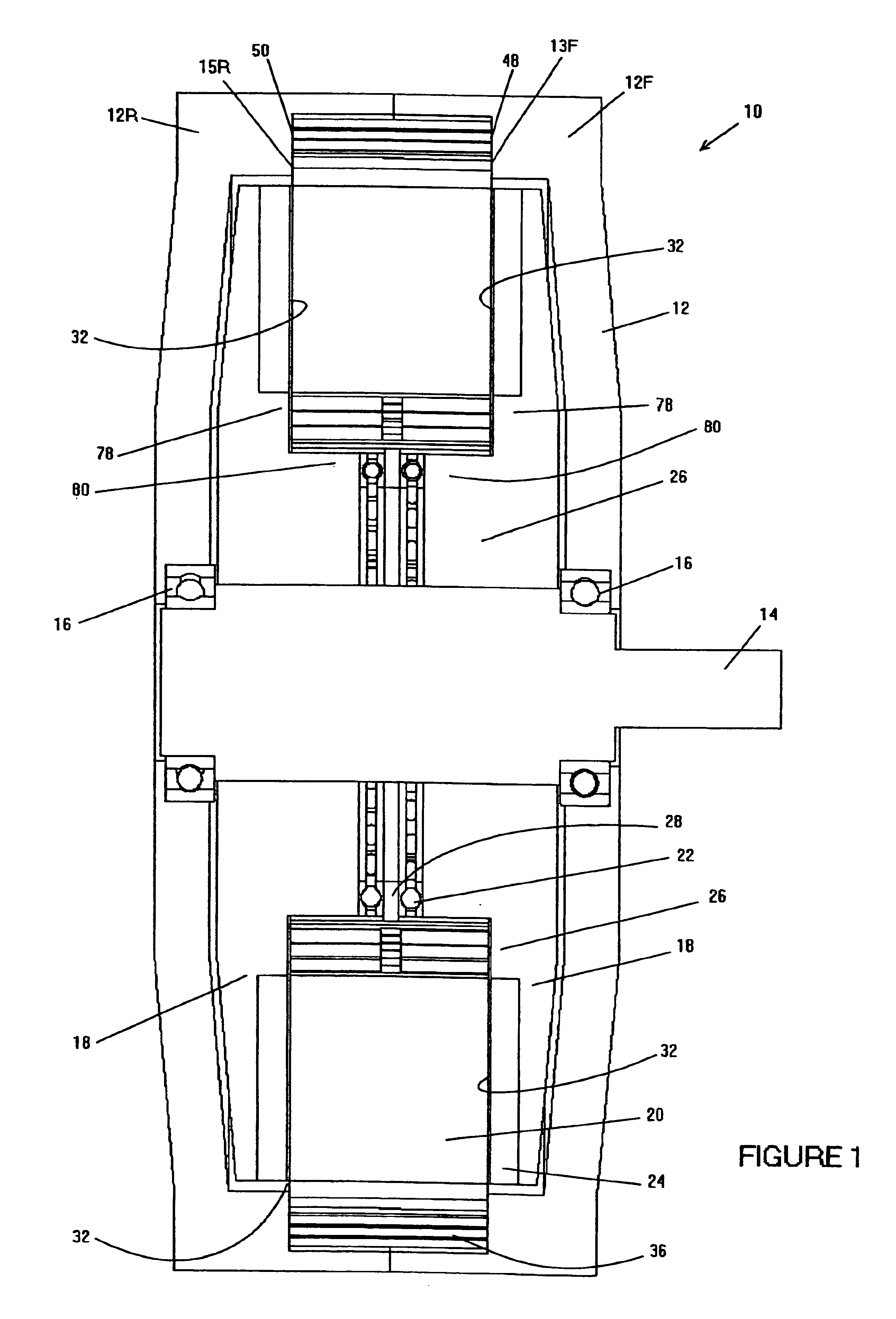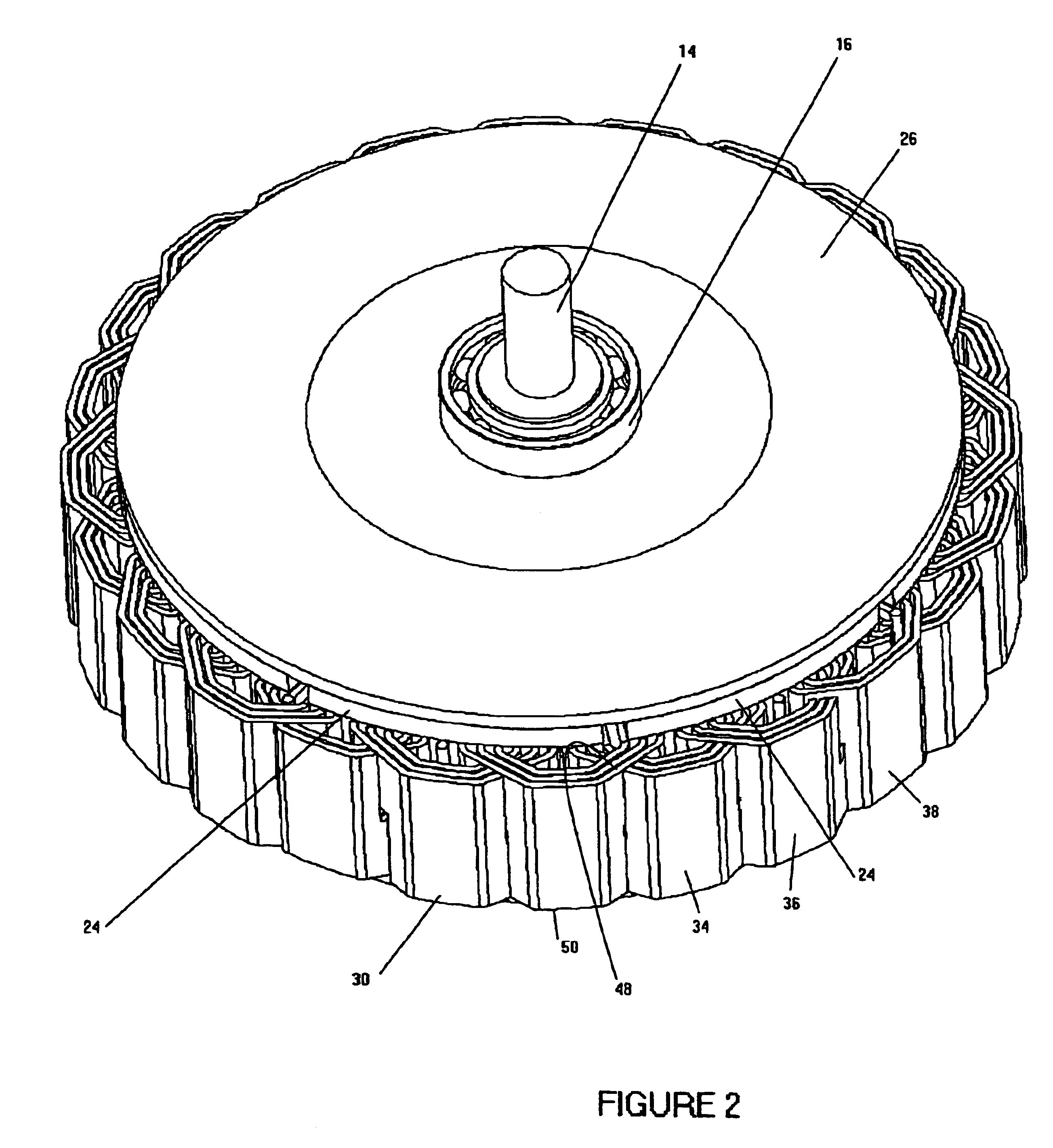Electromotive devices using notched ribbon windings
a technology of notched ribbon and electric motor, which is applied in the direction of windings, stator/rotor bodies, and applying solid insulation, etc., can solve the problems of counter-intuitive use of notched ribbon in the cross-over area, and achieve the effect of reducing electrical resistance, increasing copper fraction, and reducing electrical resistan
- Summary
- Abstract
- Description
- Claims
- Application Information
AI Technical Summary
Benefits of technology
Problems solved by technology
Method used
Image
Examples
Embodiment Construction
FIG. 1 is a sectional view (cross-hatching not shown for clarity) of an embodiment of a permanent magnet synchronous machine (PMM) 10 made in accordance with the present invention. The PMM 10 includes a housing 12, which is made up of a front housing portion 12F and a rear housing portion 12R. It also includes a shaft 14, which is supported for rotation by radial bearings 16, one or more rotor disks 18 (also referred to as rotors 18), which rotate with the shaft 14, one or more stators 20 which are secured, as by clamping, to the housing 12, and a plurality of thrust bearings 22. As will be explained later in more detail, the front housing portion 12F has a front flange portion 13F, and the rear housing portion 12R has an opposed, rear flange portion 15R. The front and rear axial faces 48, 50 of the exterior end-turn portions 64 (See FIG. 20) of the stator 20 are clamped between these opposed front and rear flanges 13F, 15R.
Referring to FIGS. 1, 2, and 3, each of the rotors 18 inclu...
PUM
| Property | Measurement | Unit |
|---|---|---|
| height | aaaaa | aaaaa |
| thickness | aaaaa | aaaaa |
| shape | aaaaa | aaaaa |
Abstract
Description
Claims
Application Information
 Login to View More
Login to View More - R&D
- Intellectual Property
- Life Sciences
- Materials
- Tech Scout
- Unparalleled Data Quality
- Higher Quality Content
- 60% Fewer Hallucinations
Browse by: Latest US Patents, China's latest patents, Technical Efficacy Thesaurus, Application Domain, Technology Topic, Popular Technical Reports.
© 2025 PatSnap. All rights reserved.Legal|Privacy policy|Modern Slavery Act Transparency Statement|Sitemap|About US| Contact US: help@patsnap.com



